Inglewood, California Blood Testing Facilities
 Represents a LabCorp blood testing facility
Represents a LabCorp blood testing facility Represents a Quest Diagnostics blood testing facility
Represents a Quest Diagnostics blood testing facility

Nearby Labcorp Blood Testing facilities:
- Labcorp Center Distance: 0 m, 501 E Hardy St. Suite 150, Inglewood, Los Angeles County, CA, 90301
- Labcorp Center Distance: 2 m, 8540 S Sepulveda Blvd Ste 107, Westchester, Los Angeles County, CA, 90045
- Labcorp Center Distance: 5 m, 3831 Hughes Ave. Ste 607, Culver City, Los Angeles County, CA, 90232
- Labcorp Center Distance: 7 m, 510 N. Prospect Ave. Suite 305, Redondo Beach, Los Angeles County, CA, 90277
- Labcorp Center Distance: 8 m, 4201 Torrance Blvd Ste 240, Torrance, Los Angeles County, CA, 90503
- Labcorp Center Distance: 9 m, 1821 Wilshire Blvd. Ste 210, Santa Monica, Los Angeles County, CA, 90403
- Labcorp Center Distance: 10 m, 3500 Lomita Blvd. Suite 102, Torrance, Los Angeles County, CA, 90505
- Labcorp Center Distance: 12 m, 1510 S Central Ave. Ste 520, Glendale, Los Angeles County, CA, 91204
- Labcorp Center Distance: 13 m, 550 Deep Valley Dr. Suite 317, Palos Verdes Estates, Los Angeles County, CA, 90274
- Labcorp Center Distance: 14 m, 433 N. 4Th Street Suite 201, Montebello, Los Angeles County, CA, 90640
- Labcorp Center Distance: 15 m, 1360 W 6Th St Ste 190, San Pedro, Los Angeles County, CA, 90732
- Labcorp Center Distance: 16 m, 50 Alessandro Pl. Suite A10, Pasadena, Los Angeles County, CA, 91105
- Labcorp Center Distance: 17 m, 15211 Vanowen St Ste 319, Van Nuys, Los Angeles County, CA, 91405
- Labcorp Center Distance: 18 m, 1809 Verdugo Blvd 290, Glendale, Los Angeles County, CA, 91208
- Labcorp Center Distance: 19 m, 10861 Cherry St. Suite 200, Los Alamitos, Orange County, CA, 90720
- Labcorp Center Distance: 20 m, 1190 Pacific Coast Hwy Ste C, Seal Beach, Orange County, CA, 90740
- Labcorp Center Distance: 21 m, 3400 W. Ball Road Ste 104, Anaheim, Orange County, CA, 92804
- Labcorp Center Distance: 22 m, 14901 Rinaldi St. Suite 204, Mission Hills, Los Angeles County, CA, 91345
- Labcorp Center Distance: 23 m, 7872 Walker St. Suite 109, La Palma, Orange County, CA, 92801
- Labcorp Center Distance: 24 m, 1950 Sunnycrest Dr. Suite 1800, Fullerton, Orange County, CA, 92835
- Labcorp Center Distance: 25 m, 28240 Agoura Road Suite 204, Agoura Hills, Los Angeles County, CA, 91301
- Labcorp Center Distance: 26 m, 15064 Moran Street, Westminster, Orange County, CA, 92683
- Labcorp Center Distance: 27 m, 18821 Delaware St. Ste 102, Huntington Beach, Orange County, CA, 92648
- Labcorp Center Distance: 28 m, 12665 Garden Grove Bl. Ste 212, Garden Grove, Orange County, CA, 92843
- Labcorp Center Distance: 29 m, 1201 N. Rose Dr. Suite 202, Placentia, Orange County, CA, 92870
- Labcorp Center Distance: 30 m, 705 W La Veta Ave Ste 102, Orange, Orange County, CA, 92868
- Labcorp Center Distance: 31 m, 1335 Cypress Ave. Suite 101, San Dimas, Los Angeles County, CA, 91773
- Labcorp Center Distance: 32 m, 23929 Mcbean Pkwy. Suite 107, Valencia, Los Angeles County, CA, 91355
- Labcorp Center Distance: 33 m, 425 Haaland Dr. Ste 106, Thousand Oaks, Ventura County, CA, 91361
- Labcorp Center Distance: 34 m, 27420 Tourney Rd. Suite 140, Valencia, Los Angeles County, CA, 91355
- Labcorp Center Distance: 35 m, 558 N. Ventu Park Rd. Suite C, Newbury Park, Ventura County, CA, 91320
- Labcorp Center Distance: 36 m, 865 Patriot Drive Suite 101, Moorpark, Ventura County, CA, 93021
- Labcorp Center Distance: 37 m, 4870 Barranca Pkwy. Ste 290, Irvine, Orange County, CA, 92604
- Labcorp Center Distance: 38 m, 12555 Central Ave. Ste Af, Chino, San Bernardino County, CA, 91710
- Labcorp Center Distance: 39 m, 113 Waterworks Way Suite 160, Irvine, Orange County, CA, 92618
- Labcorp Center Distance: 42 m, 1310 San Bernardino Rd Ste 107, Upland, San Bernardino County, CA, 91786
- Labcorp Center Distance: 43 m, 23961 Calle De La Magdalena St, Laguna Hills, Orange County, CA, 92653
- Labcorp Center Distance: 45 m, 10801 Foothill Blvd Ste 105, Rancho Cucamonga, San Bernardino County, CA, 91730
- Labcorp Center Distance: 46 m, 800 Magnolia Ave Ste 108, Corona, Riverside County, CA, 92879
- Labcorp Center Distance: 47 m, 29873 Santa Margarita Pkwy102, Rancho Santa Margarita, Orange County, CA, 92688
- Labcorp Center Distance: 50 m, 300 South A St 103, Oxnard, Ventura County, CA, 93030
- Labcorp Center Distance: 52 m, 3975 Jackson St. Ste 104, Riverside, Riverside County, CA, 92503
- Labcorp Center Distance: 53 m, 665 Camino De Los Mares 303A, San Clemente, Orange County, CA, 92673
- Labcorp Center Distance: 54 m, 3936 Phelan Rd. Suite F4, Phelan, San Bernardino County, CA, 92371
- Labcorp Center Distance: 56 m, 2955 Loma Vista Rd, Ventura, Ventura County, CA, 93003
- Labcorp Center Distance: 62 m, 399 E. Highland Ave. Ste 510, San Bernardino, San Bernardino County, CA, 92404
- Labcorp Center Distance: 63 m, 12712 Heacock St. Ste 7, Moreno Valley, Riverside County, CA, 92553
- Labcorp Center Distance: 65 m, 255 Terracina Blvd Ste 106, Redlands, San Bernardino County, CA, 92373
- Labcorp Center Distance: 68 m, 17450 Main St. Suite C, Hesperia, San Bernardino County, CA, 92345
- Labcorp Center Distance: 70 m, 12332 Hesperia Rd Suite B, Victorville, San Bernardino County, CA, 92395
- Labcorp Center Distance: 72 m, 19341 Bear Valley Rd Ste 102, Apple Valley, San Bernardino County, CA, 92308
Nearby Quest Blood Testing facilities:
- Quest Center Distance: 7 m, 520 N Prospect Ave, Redondo Beach, Los Angeles County, CA, 90277-3043
- Quest Center Distance: 8 m, 1127 Wilshire Blvd, Los Angeles, Los Angeles County, CA, 90017-3901
- Quest Center Distance: 10 m, 23441 Madison St, Torrance, Los Angeles County, CA, 90505-4735
- Quest Center Distance: 13 m, 801 S Chevy Chase Dr, Glendale, Los Angeles County, CA, 91205-4437
- Quest Center Distance: 15 m, 1294 W 6Th St, San Pedro, Los Angeles County, CA, 90731-2998
- Quest Center Distance: 17 m, 416 W Lastunas Dr, San Gabriel, Los Angeles County, CA, 91776-1236
- Quest Center Distance: 19 m, 15141 Whittier Blvd, Whittier, Los Angeles County, CA, 90603-2158
- Quest Center Distance: 20 m, 18250 Roscoe Blvd, Northridge, Los Angeles County, CA, 91325-4265
- Quest Center Distance: 27 m, 18800 Main St, Huntington Beach, Orange County, CA, 92648-1718
- Quest Center Distance: 28 m, 9900 Talbert Ave, Fountain Valley, Orange County, CA, 92708-5153
- Quest Center Distance: 29 m, 11180 E Warner Ave, Fountain Valley, Orange County, CA, 92708-7515
- Quest Center Distance: 30 m, 1220 La Venta Dr., Westlake Village, Ventura County, CA, 91361-3749
- Quest Center Distance: 31 m, 2876 Sycamore Dr, Simi Valley, Ventura County, CA, 93065-1550
- Quest Center Distance: 32 m, 801 N Tustin Ave, Santa Ana, Orange County, CA, 92705-3607
- Quest Center Distance: 36 m, 4028 Grand Ave, Chino, San Bernardino County, CA, 91710-5486
- Quest Center Distance: 37 m, 4950 Barranca Pkwy, Irvine, Orange County, CA, 92604-8648
- Quest Center Distance: 42 m, 1399 E Foothill Blvd, Upland, San Bernardino County, CA, 91786-4060
- Quest Center Distance: 43 m, 23521 Paseo De Valencia, Laguna Hills, Orange County, CA, 92653-3673
- Quest Center Distance: 44 m, 500 Paseo Camarillo, Camarillo, Ventura County, CA, 93010-5900
- Quest Center Distance: 45 m, 2250 S. Main St, Corona, Riverside County, CA, 92882-2534
- Quest Center Distance: 52 m, 9041 Magnolia Ave, Riverside, Riverside County, CA, 92503-3956
- Quest Center Distance: 55 m, 4646 Brockton Ave, Riverside, Riverside County, CA, 92506-0103
- Quest Center Distance: 61 m, 6485 Day St, Riverside, Riverside County, CA, 92507-0926
- Quest Center Distance: 62 m, 2150 N Waterman Ave, San Bernardino, San Bernardino County, CA, 92404-4811
- Quest Center Distance: 63 m, 32251 Mission Trl, Lake Elsinore, Riverside County, CA, 92530-4536
- Quest Center Distance: 70 m, 12370 Hesperia Rd, Victorville, San Bernardino County, CA, 92395-4787
- Quest Center Distance: 74 m, 27699 Jefferson Ave, Temecula, Riverside County, CA, 92590-2696
- Quest Center Distance: 80 m, 3601 Vista Way, Oceanside, San Diego County, CA, 92056-4559
- Quest Center Distance: 86 m, 3905 State St, Santa Barbara, Santa Barbara County, CA, 93105-5101
- Quest Center Distance: 88 m, 477 N El Camino Real, Encinitas, San Diego County, CA, 92024-1353
- Quest Center Distance: 99 m, 309 E Mountain View St, Barstow, San Bernardino County, CA, 92311-2814
Inglewood California Hormone Replacement Therapy Services
Wellness is both easy to understand and quite complex. Preserving health and vitality sounds easy on one hand—eat well, sleep well, and exercise. On the other hand, there are a wide variety of factors which can make staying optimally healthy difficult, many of which cannot be controlled.
The HRT specialists at our Board Certified Inglewood Hormone Clinic understand the influential role that Hormone Balance plays in maintaining vitality, and we know the havoc that Endocrinological issues can play on the human body. Our Hormone Doctors have extensive clinical skill and expertise in the treatment of a wide range of Hormonal Issues, including Age-Related Issues such as Andropause, Growth Hormone Deficiency, and more.
If you are age 30 or over and are interested in facilitating Hormone Balance via therapeutic intervention, our Inglewood Wellness Experts can help you maximize your wellness through the use of Bio-Identical and Recombinant Hormone Treatments. We also offer a variety of Pharmaceutical Grade Vitamin and Nutrition Supplements such as Vitamin D and B12 Injections.
Our Licensed HRT Professionals are available for free consultation. Fill out the patient identification form or contact us at the number at the top of the page to get started!
HGH Injections in Inglewood California
Human Growth Hormone Deficiency is a surprisingly common issue that aging men and women face. HGH is a central aspect of cellular metabolism, and, as we grow older, Growth Hormone Levels enter an unavoidable state of decline. It's not a disease; it's a physiological certainty. Many individuals never experience severe issues related to this deficiency, but it can lead to significant physiological problems if HGH Levels fall too low.
If you've noticed changes in your health, such as loss of strength, depression, low energy, trouble focusing, poor sleep, and weight gain, these are all symptoms of Somatopause (age-related HGH Deficiency). If our tests show that Low HGH Levels are having a detrimental impact on your wellness, we can initiate Bio-Identical Growth Hormone Injection Therapy to correct your Hormone Imbalance!
Inglewood Sermorelin Injections for Somatopause
While HGH Shots are a time-tested means of relief from Growth Hormone Deficiency, time and research bring new HRT Options and therapeutic techniques. Sermorelin Acetate Therapy has found increasing acceptance and utilization as a high-quality means of HGH Restoration. While Human Growth Hormone Injections remain expensive due to the complex structure of the HGH Molecule, Sermorelin has a simplified structure that is less expensive to produce, meaning that you can expect to pay around half as much for Sermorelin as you would for the same amount of Growth Hormone. Our HGH Therapy Specialists can provide you with extensive information about our HGH Deficiency Treatments!
Inglewood Low-T Clinics for Relief from Low Libido and Testosterone Deficiency
Andropause is the clinical term for Age-Associated Testosterone Decline. Andropause is the reason why Testosterone Deficiency becomes increasingly common as men grow older. The body's ability to produce Testosterone falls at around 1-2% per year, beginning at approximately age 30. Low-T is well-known for being the prime contributor to low libido and erectile dysfunction, but it also leads to issues such as fatigue, depression, reduced exercise capacity, increased body fat and loss of muscle mass. Our Board Certified Hormone Clinic offers a range of effective and safe Testosterone Therapy Treatments, including Testosterone Cypionate and Enanthate Injections, Topical Low-T Gels, and Andropause Patches. We can help you restore your sexual potency and improve your quality of life!
Inglewood Comprehensive Hormone Deficiency Testing
Our Inglewood HRT Clinic provides its services to the entire Los Angeles area, including Inglewood California, with the help of LabCorp and Quest Diagnostics. These companies are nationally recognized for their accurate and efficient lab testing protocols. When you contact us for diagnostic evaluation, we will arrange for you to meet with one of our Quest Diagnostics or LabCorp Affiliates in your area. There, you will provide a blood sample and will undergo a brief physical. You can skip the physical if you have a medical physical from the past six months.
Your blood work will be thoroughly and extensively analyzed to measure several markers which demonstrate Hormone Balance, such as Thyroid Hormone, IGF-1, Free/Total Testosterone (for men), and more. These tests will provide the evidence necessary to determine your clinical need for Hormone Optimization and which of our next-gen services are right for you! Our HRT Doctors will provide you with their clinical opinion regarding your Hormone Therapy Needs and work with you to build a 21st Century Treatment Regimen designed to maximally suit your needs!
Information and Quick Facts About Inglewood California
Inglewood California is one of the 28 cities which make up Los Angeles County. Inglewood is located directly to the southwest of Los Angeles and is also close to Hawthorne, Manhattan Beach, El Segundo, Gardena, Santa Monica, and Culver City. Inglewood is widely referred to as the City of Champions and is home to the LA Clippers as well as the Chargers and Rams of the NFL. Inglewood was founded in 1888 when the Inglewood School District was established. Inglewood became an incorporated community in 1908. Inglewood is comprised of ten neighborhoods: Lockhaven, Inglewood Knolls, Century Heights, Sports Village, Centinela Heights, Hollypark Knolls, Arbor Village, Fairview Heights, Downtown Inglewood, and Morningside Park.
All About Inglewood, California Geographic Area
Inglewood is a city in southwestern Los Angeles County, California, southwest of downtown Los Angeles. It was incorporated on February 14, 1908. Its population stood at 109,673 as of the 2010 Census. The city is in the South Bay region of the greater Los Angeles area.
The earliest residents of what is now Inglewood were indigenous people who used the natural springs in today's Edward Vincent Jr. Park (known for most of its history as Centinela Park). Local historian Gladys Waddingham wrote that these springs took the name Centinela from the hills that rose gradually around them and which allowed ranchers to watch over their herds "(thus the name centinelas or sentinels).":unpaged [xiv]
Waddingham traced the written history of Inglewood back to the original settlers of Los Angeles in 1781, one of whom was the Spanish soldier Jose Manuel Orchado Machado, "a 23-year-old muleteer from Los Alamos in Sinaloa." These settlers, she wrote, were ordered by the officials of the San Gabriel Mission "to graze their animals on the ocean side of Los Angeles in order not to infringe on Mission lands." As a result, the settlers, or pobladores, drove some of their cattle to the "lush pasture lands near Centinela Springs," and the first construction there was done by one Ygnacio Avila, who received a permit in 1822 to build a "corral and hut for his herders.":unpaged [xiv]
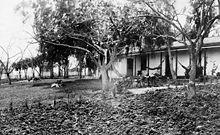
Later Avila constructed a three-room adobe on a slight rise overlooking the creek that ran from Centinela Springs all the way to the ocean. According to the LAOkay web site, this adobe was built where the present baseball field is in the park. It no longer exists.
In 1834 Ygnacio Machado, one of the sons of Jose Machado, built the Centinela Adobe,:unpaged [xv] which sits on a rise above the present 405 San Diego Freeway and is used as the headquarters of the Centinela Valley Historical Society. Two years later, Waddingham writes, Ygnacio was granted the 2,220-acre (9.0 km2) Rancho Aguaje de la Centinela even though this land had already been claimed by Avila.:unpaged [xv]
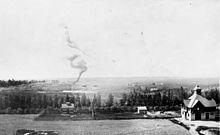
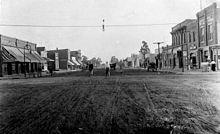

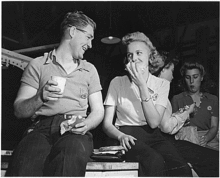
Inglewood Park Cemetery, a widely used cemetery for the entire region, was founded in 1905, and the city has been home to the Hollywood Park Racetrack since 1938. Fosters Freeze, the first Soft Serve ice cream chain in California, was founded by George Foster in 1946 in Inglewood. Inglewood was named an All-America City by the National Civic League in 1989 and yet again recently in 2009 for its visible progress.
Ku Klux Klan activities in Inglewood during the 20th century were highlighted by the 1922 arrest and trial of 37 men, most of them masked, for a night-time raid on a suspected bootlegger and his family. The raid led to the shooting death of one of the culprits, an Inglewood police officer. A jury returned a "not guilty" verdict for all defendants who completed the trial. It was this scandal, according to the Los Angeles Times, that eventually led to the outlawing of the Klan in California. The Klan had a chapter in Inglewood as late as October 1931.
auNo blacks had ever lived in Inglewood, au Gladys Waddingham wrote,:59 but by 1960, authey lived in great numbers along its eastern borders. This came to the great displeasure of the predominantly white residents already residing in Inglewood. In 1960, the census counted only 29 'Negroes' among Inglewood's 63,390 residents. Not a single black child attended the city's schools. Real estate agents refused to show homes to blacks. A rumored curfew kept blacks off the streets at night. Inglewood was a prime target because of its [previous] history of restrictions. au auFair housing and school busing were the main problems of 1964. The schools were not prepared to handle racial incidents, even though any that occurred were very minor. Adults held many heated community meetings, since the Blacks objected to busing as much as did the Whites. au:61 In 1969, an organization called auMorningside Neighbors au changed its name to auInglewood Neighbors" "in the hope of promoting more integration. au:63
On July 22, 1970, Los Angeles Superior Court Judge Max F. Deutz ordered Inglewood schools to desegregate in response to a suit filed by 19 parents. At least since 1965, said Deutz, the Inglewood school board had been aware of a growing influx of black families into its eastern areas but had done nothing about the polarization of its pupils into an eastern black area and a western white one. On August 31, he rejected an appeal by four parents who said the school board was not responsible for the segregation but that the blacks "selected their places of residence by voluntary choice."
The first black principal among the 18 Inglewood schools was Peter Butler at La Tijera Elementary,:66 and in 1971, Waddingham wrote, auStormy racial meetings in 1971 au included a charge by ausome real estate men in the overflowing Crozier Auditorium au that the Human Relations Commission was acting like authe Gestapo. au:67 In that year, Loyd Sterling Webb, president of Inglewood Neighbors, became the first black officeholder when voters elected him to the school board.
In 1972 Curtis Tucker Sr. was appointed as the first black City Council member.:69 That year composer LeRoy Hurte, an African-American, took the baton of the Inglewood Symphony Orchestra and continued to work with it for 20 years.:75 Edward Vincent became Inglewood aos first black mayor in 1983. In that decade Inglewood became the first city in California to declare the birthday of Martin Luther King, Jr. as a holiday.:76
The 1990 census showed that Hispanics in Inglewood had increased by 134 percent since 1980, the largest jump in the South Bay. Economic factors apparently played a role in where new arrivals settled, said David Heer, a USC professor of sociology and associate director of the university's Population Research Laboratory. "Housing is generally less expensive here than elsewhere . . . and I would say that they receive a warmer welcome here," said Norm Cravens, assistant city manager in Inglewood, where the Anglo population dropped from nearly 21 percent in 1980 to 8.5 percent in 1990.
In the 2000 census, blacks made up 47 percent of the city's residents (53,060 people), and Hispanics made up 46 percent (51,829), but the Census Bureau estimated that in 2007 the percentage of blacks had declined to 41 percent (48,252) and that of Hispanics of any race were at 52.5 percent (61,847). The white population declined from 19 percent (21,505) to 17.7 percent (20,853).
But in that year, only one of the city's five City Council members was Latino, Jose Fernandez. There were no Latinos on the five-member Board of Education.
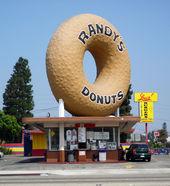
According to the United States Census Bureau, the city has a total area of 9.1 square miles (24 km2). Downtown Inglewood is 4.15 miles (6.68 km) from Los Angeles International Airport (LAX).
The Crenshaw-Imperial district was a later annexation to Inglewood. It has its own branch public library and an important shopping center for the area.
Morningside Park is a district in the eastern part of the city. Though the city of Inglewood does not define the district's boundaries, it may be delineated by Hyde Park on the north, South Los Angeles on the east, Century Boulevard on the south and Prairie Avenue on the west. The major streets that run through the area are Manchester and Crenshaw boulevards. It is six miles (10 km) from Los Angeles International Airport and about two miles (3 km) from the Hollywood Park Racetrack and The Forum where for 31 years the Los Angeles Lakers and Los Angeles Kings played.
North Inglewood is the area north of the Santa Fe railroad tracks. In 2009, it was reported to be the site of a "burgeoning arts scene" centered at East Hyde Park Boulevard and La Brea Avenue. Fairview Heights is a signed area north of Florence and east of La Brea.
The 2010 United States Census reported that Inglewood had a population of 109,673. The population density was 12,062.1 people per square mile (4,657.2/km ²). The racial makeup of Inglewood was 48,164 (43.9%) African American, 25,562 (23.3%) White, 751 (0.7%) Native American, 1,484 (1.4%) Asian, 350 (0.3%) Pacific Islander, 28,860 (26.3%) from other races, and 4,502 (4.1%) from two or more races. There were 55,449 people classifying themselves as Hispanic or Latino ae 50.6% of the population.[clarification needed]
The Census reported that 108,171 people (98.6% of the population) lived in households, 987 (0.9%) lived in non-institutionalized group quarters, and 515 (0.5%) were institutionalized.
There were 36,389 households, out of which 15,315 (42.1%) had children under the age of 18 living in them, 13,095 (36.0%) were opposite-sex married couples living together, 8,987 (24.7%) had a female householder with no husband present, 2,937 (8.1%) had a male householder with no wife present. There were 2,318 (6.4%) unmarried opposite-sex partnerships, and 234 (0.6%) same-sex married couples or partnerships. 9,346 households (25.7%) were made up of individuals and 2,776 (7.6%) had someone living alone who was 65 years of age or older. The average household size was 2.97. There were 25,019 families (68.8% of all households); the average family size was 3.59.
The population was spread out with 29,293 people (26.7%) under the age of 18, 11,853 people (10.8%) aged 18 to 24, 31,650 people (28.9%) aged 25 to 44, 26,621 people (24.3%) aged 45 to 64, and 10,256 people (9.4%) who were 65 years of age or older. The median age was 33.4 years. For every 100 females there were 90.6 males. For every 100 females age 18 and over, there were 86.8 males.
There were 38,429 housing units at an average density of 4,226.5 per square mile (1,631.9/km ²), of which 13,447 (37.0%) were owner-occupied, and 22,942 (63.0%) were occupied by renters. The homeowner vacancy rate was 1.5%; the rental vacancy rate was 5.5%. 43,040 people (39.2% of the population) lived in owner-occupied housing units and 65,131 people (59.4%) lived in rental housing units.
Source for this section is the American Community Survey conducted by the U.S. Census Bureau in 2006. Numbers may be rounded to the nearest whole figure.
Inglewood aos population of 129,900 in 2006 was relatively youthful, with a median age of 31, compared to 36 in the nation as a whole. Eleven percent of its residents were under 5 years of age, as against 7 percent in the rest of the country. Some 8 percent were 65 or older, versus 12 percent elsewhere.
It was a city of renters squeezing into a limited amount of space. Of Inglewood aos 37,562 occupied housing units (houses and apartments), just 39 percent were owned by the people who lived in them (compared to 67 percent in the U.S. as whole). The other units were rented out. Only 5 percent of its housing units were vacant, much less than the 12 percent across the country. The number of people living in each unit was about 3.7 persons, versus 2.7 elsewhere. Family size was 3.9 people, compared to 3.2.
It was estimated that 18 percent of Inglewood families had incomes below the poverty level, about twice that of the country at large (9 percent).
About 17 percent of Inglewood aos residents had earned a bachelor aos degree or higher (versus 27 percent across the country).
Twenty-nine percent of the city's population were foreign-born, compared to 13 percent in the nation as a whole.
In 2009, the Los Angeles Times's "Mapping L.A." project supplied these neighborhood statistics based on the 2000 census.
The population was 112,482, or 12,330 people per square mile, among the highest densities for the South Bay and among the highest densities for the county. The percentage of black people was high for the county, and the population was moderately diverse. Median household income was $46,574, low for both the South Bay and for the county. The median age was 29, young for the county; the percentage of residents aged 10 or under was among the county's highest. Three people, on the average, lived in each household ae high for the South Bay but about average for the county. There was a higher percentage of families headed by single parents than elsewhere in the county. The percentage of veterans who served during 1975 ae89 and 1990 ae99 was among the county's highest.
(*) "The diversity index measures the probability that any two residents, chosen at random, would be of different ethnicities. If all residents are of the same ethnic group it's zero. If half are from one group and half from another it's .50."
See also Roosevelt Dorn.
Inglewood has the highest percentage of registered Democrats of any city in California, with 75.6 percent of its 48,615 voters registered in May 2009 as Democrats. Seven percent were registered as Republicans, and 14.1 percent declined to state a preference.
In 2005, the Bay Area Center for Voting Research, a nonpartisan organization in Berkeley, ranked Inglewood as the sixth-most-liberal city in the United States, after Oakland, California, and just ahead of Newark, New Jersey. Researchers examined voting patterns of 237 American cities with populations over 100,000 and ranked them on liberal and conservative scales.
The city is within California's 35th congressional district, which in February 2008 had a Cook Partisan Voting Index of D +33, which meant that recent Democratic presidential candidates received 33 percentage points more votes than the national average. It is represented by Democrat Maxine Waters.
In the California Legislature, Inglewood is in the 25th Senate District, represented by Democrat Rod Wright and in the 51st Assembly District, represented by Democrat Steve Bradford.
The Los Angeles County Department of Health Services operates the Curtis Tucker Health Center in Inglewood.
The United States Postal Service operates the Hillcrest Inglewood Post Office at 300 East Hillcrest Boulevard, the North Inglewood Post Office at 811 North La Brea Avenue, and the Morningside Park Post Office at 3212 West 85th Street.
The city is a member of the South Bay Cities Council of Governments.
The City of Inglewood has a mayor-council type of government. The mayor is an elected office and is the chief executive officer of the city.
The City of Inglewood operates a main library in the city Civic Center, in addition to a branch in the southeastern corner of the city, near the intersection of Crenshaw and Imperial.
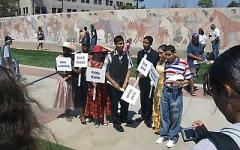
Most of Inglewood is served by the Inglewood Unified School District. The district has two zoned high schools, Inglewood High School and Morningside High School, and an alternative high school, City Honors High School.
Some of it is in the Los Angeles Unified School District
Public charter schools include:
Private schools include:
See also
In 1888, a school district was organized, trustees were elected and a building was chosen. The school opened on May 21 that year on the second floor of a livery stable on Grevillea Avenue between Regent Street and Orchard (today's Florence Avenue), with 17 boys and 16 girls. The first teacher was Minnie Walker, a graduate of Los Angeles State Normal School. The schoolroom, named Bucephalus Hall, after a horse belonging to town founder Daniel Freeman, was also used for community meetings.:6
Meanwhile, a permanent school building was erected on Grevillea Avenue a block to the south, between Regent and Queen. It remained Inglewood's only school until 1911. It was destroyed by an earthquake in 1920.:6 and 26
The Centinela Valley Union High School District was organized in 1904 to bring secondary education to the town. Inglewood High opened in two rooms of the school building with 15 students taught by Nina Martin, principal, and Anna McClelland. Four years later, a new building rose on 9.5 acres (38,000 m2) of land, and the first graduation of one boy and four girls took place in 1908.:13 ae14 Until 1912 there was a new principal every year at the grammar school, but on May 8 of that year George W. Crozier was named principal, and he held the post for 20 years. The school was renamed in his honor in 1932.:20 In 1913, George M. Green was appointed principal of Inglewood Union High School; he retired from that position in 1939.:22
In 1914 voters approved bonds for high school improvement. Four more buildings and a power plant were erected, "joined by walks and arcades." The improvement included a "five-room model flat in the Home Economics Building." Nine acres of land were bought at Kelso Avenue and Damask (now Inglewood Avenue) for an experimental agricultural statement, thenceforth known as "The Farm." There were gardens, an orchard and an alfalfa field. In 1915 Inglewood High won a first-place Los Angeles County prize for its beautiful ivy-covered brick buildings.:24 These buildings were destroyed in 1953 to make room for new ones.:unpaged [58c]
In the mid-1920s, the high school district stretched all the way south to El Segundo, so two women teachers were asked to live in El Segundo and ride the school buses with the students every day to and from that city ae for an extra dollar a day in pay. In 1923 girls adopted a school uniform, "a dark blue skirt with a white middy.":30
In 1925 a new fine arts building for the high school was erected on the southwest corner of Grevillea and Manchester, replacing the Truax Candy Kitchen,:34 but it was severely damaged by the Long Beach earthquake of 1933. It was "later rebuilt with WPA help but lost its magnificent stairway and all its fireplaces." Temporary classrooms were built on Olive Street, "all too cold in winter and too hot most of the time.":41
The athletic field on the west side of the campus, later called Badenoch Field, was used for physical education and sporting events. In 1937, agricultural classes were ended at the Farm and Sentinel Field was dedicated there for sports activities.:30 By 1938 there were more than 3,000 students and 141 teachers at the high school.:43
The "startling news" of 1948 was the dismissal "of the entire administrative staff at Inglewood High School, beginning with Principal James R. Haines." He was replaced by Forrest Murdoch of Everett, Washington, as superintendent and Fred Heisner as principal.:49
In 1952, another secondary school campus in Inglewood was opened in the east side neighborhood of Morningside Park as Morningside High School.:55 Center Park School of Los Angeles became part of the Inglewood School District in 1961 when its area (Crenshaw-Imperial) was annexed to the city.:59 In the 1970s, its name was changed to Worthington School to honor Frances and William Worthington.:74
In 2007 the area served by the Inglewood post office (including Lennox) had 98 churches, temples, mosques, chapels and other houses of worship, according to the AreaConnect.com Web site.
The first church service was held on April 22, 1888, in the Inglewood House hotel on Commercial Street (today's La Brea Boulevard), popularly called Mrs. Belden's Boarding House, when Inglewood had only 300 residents and 112 registered voters. Later services were in Bucephalus Hall, but eventually the congregation moved to Hyde Park, which left Inglewood with no church. On January 19, 1890, Inglewood's first permanent church ae Presbyterian ae was established on Market Street. A bit later the [United] Brethren constructed a building on South Market Street.:6, 10, and 17
In 1907, a group of Episcopalians began services in a private home, and a few years later the first Catholic services were held in Bank Hall. In 1910 the Presbyterians moved their two buildings, a sanctuary and a manse, to the corner of Grevillea and Nutwood "because the streetcars [on Market Street] were so noisy and threw so much dust and sand fleas in the windows.":14 and 17
In 1923 St. John Chrysostom Catholic Church was founded. The current church at the intersection of Centinela and Florence was built in 1959 and is the tallest point in the city. It is the largest congregation in the city, consisting of almost 10,000 registered families. Next door is St. John Chrysostom School, educating children since 1927 from Pre-K through 8th grade.
By 1940, the Methodists had built a structure at Manchester and La Brea, but in that year they moved to a new building at Kelso and Spruce.:46 and 57
D.A.R.E. America, an international education program that seeks to prevent use of controlled drugs, membership in gangs and violent behavior, has its headquarters in Inglewood.
The Southeast Symphony Association is a non-profit, musical and cultural association located in Inglewood, California founded in 1948 whose goal continues to be to create an orchestra that welcomes African-American musicians.
The annual Open Studios event features "drawing, painting, photography and more," under the general supervision of the Inglewood Cultural Arts organization, aided by the number of artists moving into the community. The first year of the event saw six artists featured, but at the November 2011 event "more than 30" were expected, said Renee Fox, gallery director at the Beacon Arts Building on North La Brea Avenue. The structure has been turned into 14 artists' studios, with 16 more to be added by the end of 2011. A nearby former auto showroom has also been turned over to artsts.
The Inglewood News and Inglewood Today circulate in the city.



Word Count: 4167







